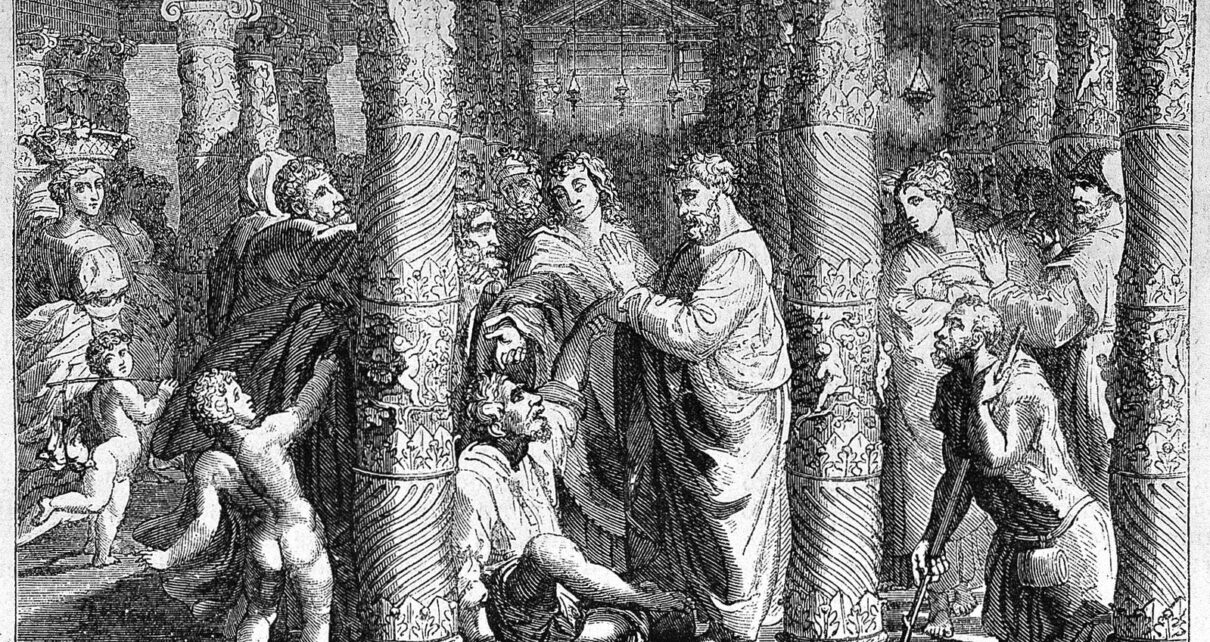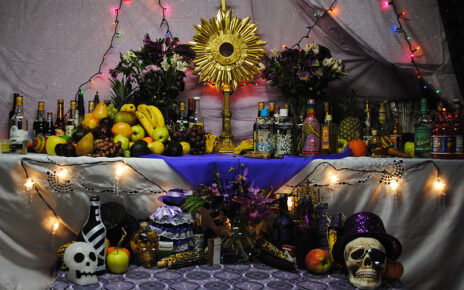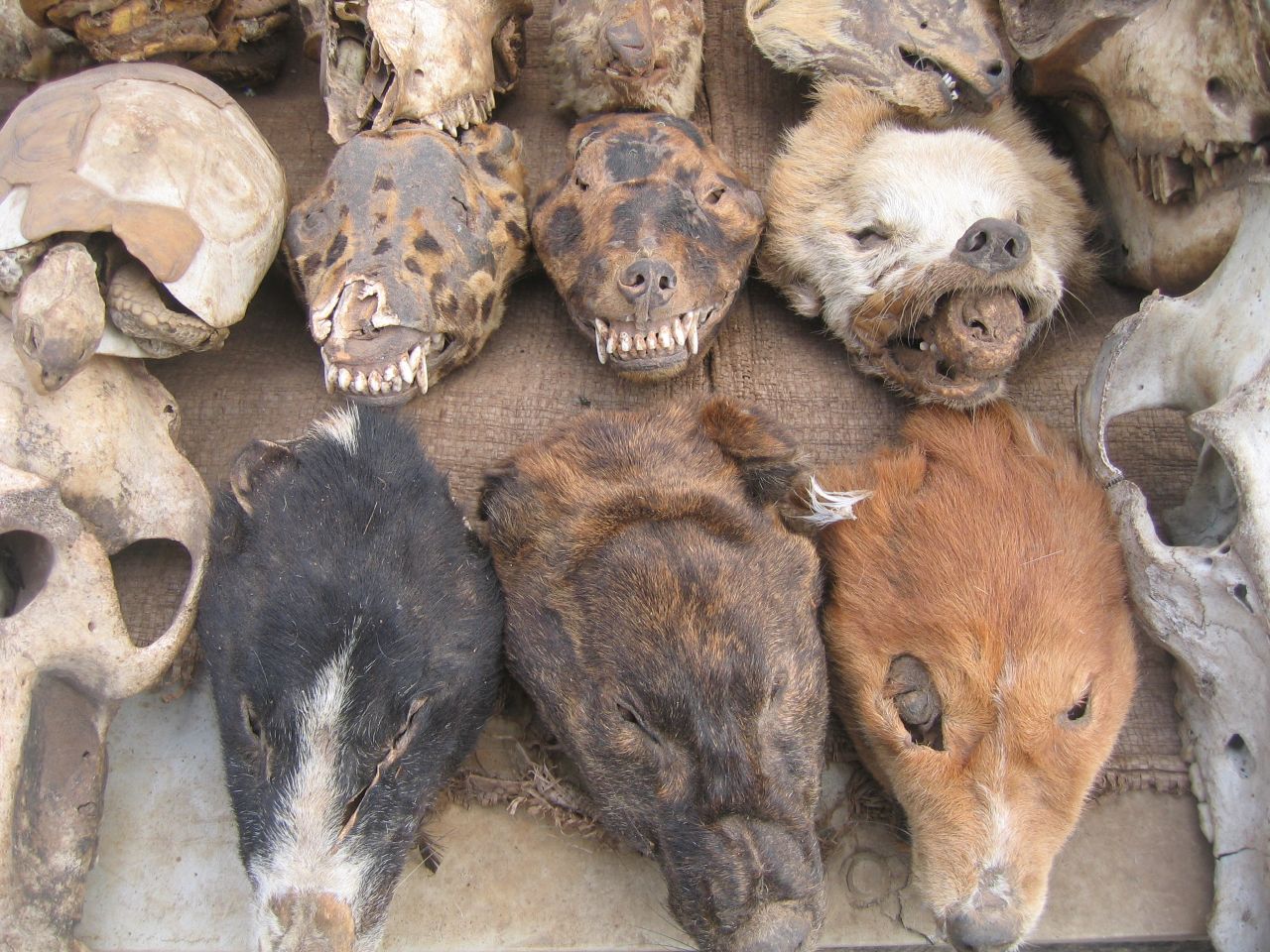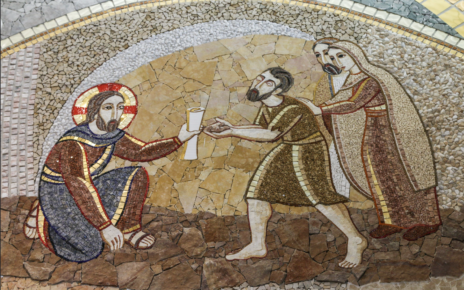The following is the first of a two-part series. It was originally published in issue 22.1 of the Journal for Cultural and Religious Studies.
Introduction
Facing the great diseases of our time – unemployment, traumatic experiences, unequal access to healthcare, racism, chronic diseases, social exclusion, alcoholism, violence, and everyday difficulties – conventional medicine often proves to be ineffective. Frequently, medical science takes the form of an ‘élite practice’,[1] unable to guarantee therapeutic treatments to all those requiring them. Furthermore, biomedicine appears as a ‘soulless science’: the rational discourses inherited from scientific naturalism reduce the body to a mere object, depriving the patient – as a subject – of the possibility of actively participating in the construction and elaboration of the meaning of his own suffering.
In this scenario, the text reads the growing presence of Pentecostal churches, of new healing theologies: charismatic communities are configured today as alternative therapeutic spaces to the conventional ones – embracing the questions of care to which traditional medicine cannot answer.
In the first part of the text, we explore the theoretical assumptions of medical science in its relationship with the body, disease, and health, and then move to its reductionist habit. Subsequently, after a brief overview of the religious movement, we examine Pentecostalism’s welcome to the unanswered demands for care. Through ritual charismatic healings, sick bodies are re-enchanted, re-appropriating the semantic network[2] that the biomedical gaze had ignored.
The ‘Medical gaze’ on the Disenchanted Body: Scientific Clinical Medicine: Knowledge, Practice and Limits
In contemporary and urbanized nations, biomedical science is the reigning knowledge titled to managing the body, disease and health issues. Recognized as a “most sophisticated, convenient and affordable”[3] system, clinical medicine emerges as a hegemonic practice starting from the 19th century. In fact, the nineteenth century was crossed by the optimistic climate of the modern project: the spirit of positivism and Enlightenment reason disenchant the world,[4] made of infallible laws and universal truths, with no room for magical or metaphysical explanations.
In this context, biomedicine is recognized as a natural science and, like the others, receives the primacy of the most valid tool for observing the ‘world of facts’ – clearly separated from the ‘world of values’.[5] Indeed, “sciences of phenomena”[6] follow the ancient paradigm which opposes what is from what is not, nature and culture, matter and spirit, res extensa and res cogitans – in Descartes’ vocabulary. Cartesian dualism establishes the premises of scientific investigation and clinical practice: “radically materialist”,[7] interested only in ascertaining the facts and distrustful of all those “irrelevant” and “unreal”[8] forms of knowledge that investigate the “experiences of the spirit”.[9]
Modern ars medica definitively renounces any theurgic vocation and takes the form of a pure “experimental and quantitative science of the organism”,[10] obtaining exclusive status in the investigation of functions and dysfunctions of the body. Accompanied by the theoretical assumptions of modern physiology and pathological anatomy,[11] medical knowledge develops a mechanistic conception of the body: a naturally given set of cellular structures, organs, and molecules. The human organism works like a machine, whose normal[12] functioning must be promptly restored every time it runs into some alteration of a biological nature, manifested through physical ‘signs’ – symptoms.
Thus, the main assignment of clinical medicine becomes the diagnosis[13] of the disease: the physical dimension of suffering. Diseases are mere facts of nature – “biological [and] universal”[14] – that emerge when regular vital mechanisms fail.[15] This biomedical conception adheres to an “abstract, highly technical, impersonal”[16] explanatory model, and provides the development of a specific analysis, etiology, and prognosis in order to re-establish the “proper functioning”[17] of the organs involved. In addition to the diagnosis, biomedicine identifies the rational treatment of the disease: the patient will follow specific steps that will lead to the “regulation of the internal environment”[18] and the re-stabilization of the regular parameters.
At this point in the argumentation, we are dealing with what a large part of medical anthropology that literature[19] understands as a ‘dehumanizing’ turn of biomedicine: observing disease and health as empirical evidence of physical realities; the growing reductionism in medical approaches rejects all remaining dimensions of suffering experience itself. In this context, the human being is framed as a bare organic entity – not as a person, including the moral, existential, cultural, and political aspects of illness[20] and health.
Without denying the enormous success in the identification, classification, and effective resolution of the empirical phenomena investigated,[21] medicine has the defect of dwelling almost exclusively on the biological aspects, contributing to a process of disenchantment of the body, removing every symbol and subjective meaning:
The patient becomes the docile body to be manipulated and explored; robbed of autonomy so completely as almost to obliterate the meaning of being an actor.[22]
Limited to the investigation of the physical symptoms of the disease, the ‘medical gaze’[23] reduces the patient from a socially and historically constructed person[24] to a mere ‘biological subject’; and it is one of the reasons that determine therapeutic ineffectiveness. In fact, patients often configure the nature of their problems through multiple narratives and representations,[25] which do not necessarily belong to the explanatory models of biomedicine. Neglecting the “multidimensionality”[26] of the disease produces iatrogenic effects[27] on the healing process itself contemplated by biomedicine: more and more patients[28] do not adhere to prescribed therapies and also turn elsewhere, e.g. Pentecostal rituals and charismatic healing processes.
Organic Bodies and Social Bodies
Medical non-compliance denounces the limits of the contemporary clinic: very effective in terms of classification and empirical identification of phenomena, it often leaves semantic and existential voids, offering ‘targeted’ and not holistic therapies. After deconstructing ontological and epistemological assumptions underlying biomedicine, the reflection continues by identifying exit strategies from this disenchantment. On a theoretical level, medical anthropology offers useful tools for rethinking the conceptions of biological reductionism: the body does not correspond to a natural fact; therefore, pain is not just a technical dysfunction and health does not merely coincide with its mechanical repair.
Overcoming such perspectives is challenging since they are deeply rooted in Western dualistic metaphysics, but it is also inevitable: the survival of human beings is not possible simply with the genetic equipment,[29] but there is a need for forging – or humanizing – individuals according to the cultural lines of the social group where they grow up. The reflection of medical anthropology begins here: recognizing the body as a cultural product,[30] socially and historically constructed, crossed or constrained[31] by practices and discourses. Such analytical overviews certainly encourage the overcoming of the concept of the body as a bio-physical entity but force it to a ‘passive ground’[32] on which to inscribe social values and meanings.
This is the equal point raised by feminist philosopher Judith Butler[33] against contemporary philosophical literature. Even in the humanistic context, although separated from the natural world of determinism, the body remains passively subscribed to the “inevitably binary structure of the nature/culture distinction”.[34] Instead, in the last decade of the twentieth century, a phenomenological perspective[35] emerged and – without rejecting the historical-cultural approach – recognized the body as an active subject through which we live and resist the meanings imposed by the social order[36]. With a ‘mindful body’,[37] the subjects actively inhabit the world and contribute to shaping its meanings[91] – in other words, bodies have performative[38] capacity.
Divine healings’: the therapeutic functions of churches
Finding a specific definition of Pentecostalism is a challenging – and in some ways counterproductive – undertaking due to the considerable variety of congregations within the movement spread throughout the world. Despite these difficulties, Joel Robbins attempts a definition of the movement to include all those “forms of Christianity in which believers receive the gifts of the Holy Spirit and have ecstatic experiences such as speaking in tongues, healing, and the prophecy”.[39] For this reflection we will use the concept of “Pentecostalism” in this broad sense, including all different movements that emerged during the 20th century that experience the spiritual gifts, although in some cases it will be more appropriate to specify that we are talking about the Catholic Pentecostal movement (CCR).
For a clearer comprehension of the Pentecostal movement in the world, it is appropriate to refer to a rough classification proposed by Allan Anderson.[40] According to this scholar Pentecostalism can be divided into its ‘classical’ form in the global context; the ‘charismatic’ one; and all those ‘nondenominational’ churches spread in most of the world.
This approximate arrangement follows a fairly linear historical chronology.[41] Scholars agree that the birth of the Pentecostal movement dates back to the Asuza Street Revival in the early 1900s – when a group of Methodist believers in Kansas began speaking in tongues.
Always with the difficulty of finding points in common between the various congregations, it can be said that the ‘classical’ Pentecostal movement promotes an existential model of “ecstatic Christian life based on the experience of the Apostles”.[42] In addition to ecstatic experiences, ‘classical’ Pentecostal theology follows the doctrine of the “Full gospel”, which insists on four aspects of the Gospel: ‘personal’[43] salvation through Jesus, divine healing, baptism in the Holy Spirit, and the second coming of Jesus Christ.[44]
Starting in the 1950s, many Pentecostals began to recognize themselves as ‘charismatic’, distinguishing themselves from ‘classical’ Pentecostalism for more flexible and inclusive doctrines. The entry of the ‘Charismatic renewal’ in the Catholic Church will be decisive: in the full cultural ferment of the sixties, the Second Vatican Council (1967), among other things, recognizes the doctrine of the gifts of the Holy Spirit, marking the “end of a regime of doctrine practice that lasted four hundred years”.[45] From Duquesne University in Pittsburgh, where two young students formed the first Catholic Charismatic prayer group after receiving the baptism of the Spirit, the movement rapidly spread throughout North America and then throughout the world. In 1977 a great ecumenical meeting took shape – the Kansas City Charismatic Conference – in which, for the first time, not only the classic Pentecostals but Protestants, Evangelicals, Anglicans, and Catholics took part.
Finally, the third wave of the Pentecostal movement spread as of the 1970s: numerous congregations took shape all over the world which detached themselves from the Churches to which they had always belonged and created “new Christian semantics”,[46] liquidating the prospects of the first wave of Pentecostalism. These independent communities are characterized by giving less theoretical and practical relevance to the experience of glossolalia and by introducing the doctrine of the ‘spiritual struggle’ against the world and the devil and the theology of the “prosperity gospel”,[47] which brings health closer to wealth.
Pentecostal and Charismatic Global Expansion
Although its origins can be traced back to the western continent, a century after its birth the Pentecostal movement has nine million[48] faithful scattered throughout the globe, from Africa to Oceania. Pentecostalism in all its varieties is undoubtedly the fastest-growing religious force in the world. According to José Casanova,[49] this exponential growth that began in the 20th century will lead Catholicism to cede the primacy of the “predominant global form of Christianity” to Pentecostal movements, which will become the heart of the Christian community.
However, as we noted in the earlier paragraph, Pentecostalism is not an ‘exclusive’ movement: Catholic theology is not threatened, but rather the traditional institution of Catholicism. The ever-expanding wave, therefore, includes independent churches especially on the African and Asian continents – and many Catholics, who also identify with charismatic movements. Specific data for a more accurate understanding: Ari Pedro Oro[50] notes that in the contemporary era the percentage of religious movements has grown by 22%. In addition, 80% of these movements recognize themselves as Pentecostal.
Countless studies[51] see the global success of Pentecostalism Christianity starting from its “cultural polyglotism”:[52] the Pentecostal movement can adapt itself to different local contexts. From the congregations that arose almost spontaneously in the university campus,[53] to the ‘multicultural’ Pentecostal churches[54] that welcome the most marginalized subjects of society in the urban ghettos,[55] up to all non-Western neo-Pentecostal communities[56] built on the ruins of an unredeemed colonial past[57] or in response to the institutional silence in the face of the violence of war.[58]
Anna Magnasco is a graduate student in Cultural Anthropology and Ethnology at the University of Turin. Her areas of research are within the urgent framework of the Anthropocene, a concept that is capable of uniting the environment, humanity and politics in a nexus of entanglements and frictions. On the one hand, she aims to deconstruct many of our paradigms, those that have brought us this far — such as that of nature, politics, health, progress, suffering, future.
[1] Cf. Gotthart Oblau, “Divine Healing and the Growth of Practical Christianity”, in Cathy Gunter Brown (ed.), Global Pentecostal and Charismatic Healing (Oxford: Oxford Academic, 2011).
[2] Cf. Byron Good, “The Heart of What’s the Matter. The Semantics of Illness in Iran”, Culture, Medicine, and Psychiatry, 1(1977): 25–58. DOI: https://doi.org/10.1007/BF00114809.
[3] Cf. Candy Gunther Brown, Global Pentecostal and Charismatic Healing (Oxford: Oxford Academic, 2011).
[4] Cf. Max Weber, Wissenschaft als Beruf (München und Leipzig: Verlag von Duncker & Humblot, 1918).
[5] Cf. Richard A. Sheweder and Robrert Levine, Culture. Theory: Essays on Mind, Self, and Emotion (New York: Cambridge University Press, 1984). Also Isabelle Stengers, “La Grande partizione”, I Fogli di ORISS 29(2008): 47-61.
[6] Cf. Eric Voegelin, “The Origins of Scientism”, Social Research 14/4 (1948): 462-494.
[7] Cf. Scheper-Hughes and Lock, “The Mindful Body: A Prolegomenon to Future Work in Medical Anthropology”, Medical Anthropology Quarterly 1/1 (1987): 6-41.
[8] Ivi, 8.
[9] Cf. Eric Voegelin, “The Origins of Scientism”, Social Research 14/4 (1948): 462-494.
[10] Cf. Gabriele Vissio, “La Vita Preferisce l’Asimmetria”, Lessico di Etica Pubblica, 1 (2015).
[11] Cf. Michael Foucault, The Birth of the Clinic (Paris: Presses Universitaires de France, 1963).
[12] Cf. Georges Canguilhelm, The Normal and the Pathological (New Jersey: Princeton University Press, 1998).
[13] Cf. Byron Good, Medicine, Rationality, and Experience. An Anthropological Perspective (Cambridge: Cambridge University Press, 1994).
[14] Ibid.
[15] Cf. Arthur Kleinman, “Concepts and a Model for the Comparison of Medical Systems as Cultural Systems”, Social Science and Medicine 12/2B (1978): 85-93.
[16] Ibid.
[17] Cf. Gabriele Vissio, “La Vita Preferisce l’Asimmetria”, Lessico di Etica Pubblica, 1 (2015).
[18] Ibid.
[19] Cf. Ivan Illich, Medical Nemesis: the Expropriation of Health (New York: Pantheon Books, 1976); Cf. Jan Howard and Anselm Strauss (eds.) Humanizing Health Care (New York: Wiley, 1975); Cf. David Wheatherall, “The Inhumanity of Medicine”, British Medical Journal 39 (1994): 24-31.
[20] It is interesting to consider how medical anthropology introduces the useful conceptual distinction between “disease”, “illness” and “sickness”. The former, as we have already seen, has to do with the technical and professional definition of disorder; “illness” concerns the experience of the disease as it is perceived by the subject, while “sickness” denotes the social dimension of suffering, the way in which the community of the individual understands it. See: Arthur Kleinman et al. “Culture, illness, and care: clinical lessons from anthropologic and cross-cultural research”, Annals of Internal Medicine 88/2 (1978): 251-8; Cf. Allan Young, “The Anthropologies of Illness and Sickness”, Annual Review of Anthropology 11/1 (1982): 257-285.
[21] Cf. Alessandro Lupo, “Antropologia Medica e Umanizzazione delle Cure”, Rivisita delle Società Italiana di Antopologia Medica 37 (2014): 105-126.
[22] Cf. Gregory Pappas, “Some Implications for the Study of the Doctor-Patient Interaction: Power, Structure, and Agency in the Works of Howard Waitzkin and Arthur Kleinman”, Social Science and Medicine 30/2 (1990): 199-204.
[23] Cf. Michael Foucault, The Birth of the Clinic (Paris: Presses Universitaires de France, 1963).
[24] Cf. Alessandro Lupo, “Antropologia Medica e Umanizzazione delle Cure”, Rivisita delle Società Italiana di Antopologia Medica 37 (2014): 105-126.
[25] Cf. Byron Good, Medicine, Rationality, and Experience. An Anthropological Perspective (Cambridge: Cambridge University Press, 1994).
[26] Cf. Alessandro Lupo, “Antropologia Medica e Umanizzazione delle Cure”, Rivisita delle Società Italiana di Antopologia Medica 37 (2014): 105-126.
[27] Cf. Ivan Illich, Medical Nemesis: the Expropriation of Health (New York: Pantheon Books, 1976).
[28] Cf. William Scarlett and Steve Young, “Medical Noncompliance: The Most Ignored National Epidemic”, Journal of Ostheopathic Medicine 116/8 (2016): 554-555.
[29] Cf. Clifford Geertz, “The Transition to Humanity”, in Horizons of Anthropology (London: Allen and Unwin, 1965).
[30] Cf. Marcel Mauss, “Les Techniques du Corps”, Journal de Psychologie 32/3-4 (1936): 271-93; Mary Douglas, Purity and Danger. An Analysis of Concepts of Pollution and Taboo (Harmondsworth: Penguin Books, 1966).
[31] Cf. Michael Foucault, The Birth of the Clinic (Paris: Presses Universitaires de France, 1963); Cf. MichaelFoucault, Discipline and Punish: The Birth of the Prison (New York: Randomi House, 1991).
[32] Cf. Ivo Quaranta, Antropologia Medica. I Testi Fondamentali (Milano: Raffaello Cortina Editore, 2006).
[33] Cf. Judith Butler, Gender Trouble (New York: Routledge, 1999).
[34] Ivi, 167.
[35] Cf. Nancy Scheper-Hughes, “An Essay: ‘AIDS and the Social Body’”, Social Science and Medicine 39/7 (1994): 991-1003; Nancy Scheper-Hughes and Margaret Lock, “The Mindful Body: A Prolegomenon to Future Work in Medical Anthropology”, Medical Anthropology Quarterly 1/1 (1987): 6-41.
[36] Cf. Judith Bulter, “Performative Acts and Gender Constitution: An Essay in Phenomenology and Feminist Theory”, Theater Journal 40/4 (1988): 519-531.
[37] Cf. Nancy Scheper-Hughes and Margaret Lock, “The Mindful Body: A Prolegomenon to Future Work in Medical Anthropology”, Medical Anthropology Quarterly 1/1 (1987): 6-41.
[38] The sense of the concept follows the interpretation offered by Butler (1993) as opposed to that of Bourdieu (1982), which is worth exploring further. The French sociologist understands the performative act as the embodied representation of social power acting on subjects. In doing so, however – and this is Butler’s criticism on him – he precludes the most marginalized subjects from the ability to act itself: a performative act not only reproduces power speech, but can resignify the context. With her theory of performativity, Butler restores agency to subjects: by sitting in the front rows of the bus, Rosa Parks – subordinate individual within the context in which she grew up – breaks the laws of power that she should inescapably have internalized and ‘produces another context’ where blacks can sit in white people’s seats (Butler, 1993: 148).
[39] Cf. Joel Robbins, “The Globalization of Pentecostal and Charismatic Christianity”, Annual Review of Anthropology 33/1 (2004): 117-133.
[40] Cf. Allan Anderson, An Introduction to Pentecostalism: Global Charismatic Christianity (Cambridge: Cambridge University Press, 2014).
[41] Allan Anderson (ivi, 2014) notes that there are difficulties not only in the classification of Pentecostalism but also in the historical reconstruction of its development. The main reason? Lack of documented sources and incomplete information.
[42] Cf. Joel Robbins, “The Globalization of Pentecostal and Charismatic Christianity” ”, Annual Review of Anthropology 33/1 (2004): 117-133.
[43] Cf. Pietro Cingolani and Alessandro Gusman, “Il Pentecostalismo e le Sfide della Contemporaneità”, La Ricerca Folklorica 65 (2012): 3-18.
[44] Donald Dayton, Theological Roots of Pentecostalism (Peadboy, MA: Hendrikson, 1987).
[45] Cf. J. Thomas Csordas, Language, Charisma and Creativity: The Ritual of Life of a Religious Movement (Berkeley, Calif, London: University of California Press).
[46] Cf. Enzo Pace, “The Catholic Charismatic Movement in Global Pentecostalism”, Religions 11/7 (2020).
[47] Ibid.
[48] Cf. Joel Robbins, “The Globalization of Pentecostal and Charismatic Christianity”, Annual Review of Anthropology 33 (2004): 117-143.
[49] Cf. José Casanova, “Religion, the New Millennium, and Globalization”, Sociology of Religion 62/4 (2001): 415-41.
[50] Cf. Ari Pedro Oro, “Impatto e Sfide del Pentecostalismo in Brasile.”, La Ricerca Folklorica 65 (2012): 65-75. DOI: https://www.jstor.org/stable/43854586
[51] Cf. José Casanova, “Religion, the New Millennium, and Globalization”, Sociology of Religion 62/4 (2001): 415-41; Cf. Simon Coleman, The Globalisation of Charismatic Christanity (Cambridge: Cambridge University Press, 2000); Cf. Joel Robbins, “The Globalization of Pentecostal and Charismatic Christianity”, Annual Review of Anthropology 33 (2004): 117-143.
[52] Cf. André Droogers, “Globalisation and Pentecostal Success”, in: Corten, Andre and Marshall-Fratani, Ruth (eds.) Between Babel and Pentecost: Transnational Pentecostalism im Africa and Latin America (Bloomington: Indiana University Press): 41-61.
[53] Cf. J. Thomas Csordas, The Sacred Self: A Cultural Phenomenology of Charismatic Healing (Berkeley: University of California Press, 1997).
[54] Cf. Pietro Cingolani, Alessandro Gusman, “Il Pentecostalismo e le Sfide della Contemporaneità”, La Ricerca Folklorica 65 (2012): 3-18.
[55] Cf. Ileana Gomez and Manuel Vasquez, “Youth Gangs and Religion among Salvadorans in Washington and El Salvador” in Anna Peterson, Manuel Vasquez Manuel, and Philip Williams (eds.), Christianity, Social Change, and Globalization in the Americas (New Brunswick, NJ: Rutgers University Press, 2001).
[56] Cf. Allan Anderson, An Introduction to Pentecostalism: Global Charismatic Christianity (Cambridge: Cambridge University Press, 2014).
[57] Cf. Alessandro Gusman 2016, “Strategie di Occupazione dello Spazio Urbano: il Caso delle Chiese Pentecostali di Kampala (Uganda)”, ANUAC 5/1 (2016): 107-128.
[58] Cf. Marian Tankink, “‘The Moment I Became Born-Again the Pain Disappeared’: The Healing of Devastating War Memories in Born-again Churches in Mbarara District, Southwest Uganda”, Transcultural Psychiatry 44/2 (2007): 1-23.
[91]Good overview
Straight forward lines of thought
probably a little more on the de-naturalization and naturalising as a discoursive praxis (e.g. Butler)
Synthesis/Conclusion by author?




